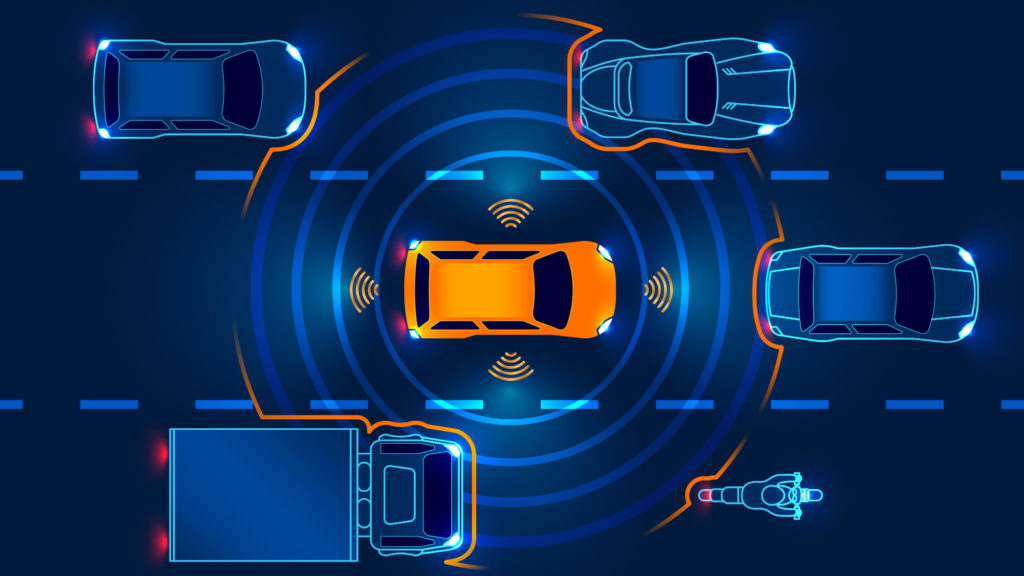What is Embedded Systems and Embedded Software? Explanation and definition
Embedded systems is a buzzword that comes up on almost every proverbial corner these days: In the automotive sector, embedded systems are a core competence, without which no safe operation of any vehicle would be possible. Relevant for admission are embedded systems and embedded software development. And the market forecasts are in favor of further, rapid growth, as evidenced, for example, by the BITKOM study "Embedded Systems - A Strategic Growth Area for Germany" or its thematically close companion, the "National Roadmap Embedded Systems". We provide both studies in PDF form after this link for direct reading on the page or convenient download.
Now we would like to offer you a comprehensive explanation of embedded systems, which will not only help you to better understand what exactly is meant by embedded systems, but also how suppliers (such as Cognizant Mobility) with embedded software development are strategic and value-adding partners for the further development of Germany as an industrial location.

Marc
Marketing Professional
10.06.22
Ca. 12 min
Embedded Systems Explanation – How it works
Let’s start with the general phrase as used by Marilyn Wolf, a world-renowned expert on embedded computing: “Any type of device that contains a programmable computer but does not itself aim to be a computer for general use.” What does that mean in detail? An embedded system is a combination of computer hardware and software that performs a specific function and is embedded in a larger system. Embedded systems therefore generally take over individual or partial functions and not the entire functional scope of the end product. The end product could typically be a vehicle, but also a smartphone, a camera, a stove. The embedded system interacts with the surrounding technical system – often taking on tasks in the areas of electrification, safety, and comfort while driving. Specifically, functions such as ASB, ESP, traction control, automatic all-wheel drive, the output of information in a user front end such as the dashboard or the infotainment system are not possible without embedded systems.

Particularly in the field of e-mobility, embedded systems are becoming increasingly important, for example in the area of battery management systems, driving assistants or also in the field of AUTOSAR. As these markets rapidly expand, the importance of embedded systems is also expected to grow exponentially. As is so often the case, it is important to develop and test today what will be allowed on the roads tomorrow.
The embedded system itself consists of a microcontroller or microprocessor, an integrated circuit, a CPU – often a High Performance Computing Unit – and usually an operating system such as (embedded) Linux, Java, or even Windows. Operating systems such as Symbian or BlackBerry Operating System were present on mobile devices, for Nokia’s and – nomen est omen – BlackBerry’s phones, but they are slowly disappearing due to the low market presence and are being replaced by modern variants such as Java, Linux or the Windows Mobile OS.
Embedded Systems Automotive – A Rapid Growth Market
We have already mentioned the growth of both the market itself and its importance, especially in the automotive industry of embedded systems, and the BITKOM study linked for you below also shows it abundantly clear: The study forecasts an annual growth of an incredible nine percent. The value share of electrical and electronic elements in modern vehicles was already around 35 percent in 2015, and the proportionate investment in development and research at many OEMs is between ten and twenty percent – and rising.
This investment is paying off: Never have there been more capable specialists in the field of embedded systems, never has the range of solutions been greater, while facing a market that is downright greedily devouring these solutions. From the eSIM to total personalization in the vehicle, from battery management to test automation: If you can do embedded, you can do car. Standards like AUTOSAR Adaptive are just keeping up, while industry production lines are struggling to keep up with the innovations. Without automated solutions such as xRPA, Industry 4.0 will probably not happen, but admittedly – that’s another topic.

What is certain, however, is that without embedded systems, we would not be grateful for everyday benefits. The chip in the debit or credit card (or any other electronic card we use in everyday life) does not work without an embedded chip based on NFC (Near Field Communication) technology. Let yourself be shown the way comfortably via GPS-supported navigation instead of tediously turning, crumpling and studying maps? Unthinkable without embedded systems. Not even the annoyingly beeping (to pleasantly flashing, depending on the type of vehicle) parking sensor is feasible without embedded systems, or the life-saving airbag, the convenient power steering, or supposedly simple things like the speedometer. We’ll give you a few more examples of where embedded systems are installed:
- At home: washing machines, Blu-ray players, computers, consoles, printers, smartphones
- In the car: anti-lock braking system, infotainment, airbag, blind spot assist, autonomous driving functions
- Medicine: EEG, MRI, cameras, or the dishwasher to disinfect the instruments.
- Industry 4.0: Assembly lines, detection of heat, liquid, current, pressure, etc.
You can already guess that this list could be continued for a long time, and surely you can already think of a lot of devices in your environment that have to work with embedded systems. And with the increasing demand for functions, whether in vehicles, smartphones or other devices, keyword IoT (Internet of Things), the need for embedded systems is also growing. After all, vehicles and consumer goods should be faster, more convenient, safer, more comprehensive and more user-friendly.
This means that not only the market of embedded systems is growing rapidly in the very long term and gaining importance daily, sometimes hourly, but also accompanying professions are developing along with it, such as embedded software development and all similar areas of IT.
Embedded Software in the Automotive Sector – The Niche Becomes the Market of the Future
Granted – software development has not really been a “niche” for a long time, but the fact that the value share in the vehicle, which consists of electrical and electronic services, for which in turn embedded systems and subsequently embedded software development are required, exceeds one third of the total costs, is less than seven years ago, if one trusts the relevant studies. This meandering sentence, worthy of a Thomas Mann, is intended to introduce the fact that the automotive industry and, consequently, also the supplier industry must focus more than ever on the area of embedded systems and embedded software development. Sure – especially the well-known OEMs have to make sure they don’t take a back seat in the rest of the overall E/E vehicle development. Gone are the days when Volkswagen essentially introduced the world’s first embedded system – today, corporate subsidiaries like CARIAD are researching ways to reduce and simplify the ECUs addressed by the myriad of embedded systems in order to stand toe-to-toe with development.

Embedded software development differs from classical software development (while still remaining maximally related, of course) in that embedded software is usually programmed for specific hardware, not for, say, everyday computers, video games, or front- and back-end development, although the latter may be part of the job description. Usually we talk about firmware, which takes over control and interaction of the corresponding embedded system, which is further divided into the bootloader, the operating system and the specifically written basic or application software. Since this type of software development is often directly in the field of high-performance products, the requirements for embedded software developers are often very high, since not only the corresponding programming languages must be known, but there should also be knowledge of the operating systems and the products and their structures. However, those who master this can also look forward to attractive positions in companies that are active in an impressive growth market, which will ensure the employment and further development of embedded systems and those involved in them for years to come in a way that creates value.
You are also welcome to apply to Cognizant Mobility if you are interested in this line of work or are looking for solutions for your products. You can find the contact form here.
Embedded Systems: The Studies
As promised, we’re conveniently attaching the BITKOM studies cited below, as well as the National Roadmap Embedded Systems – you can read them right here on the site, or download the studies and store them with all the other free PFDs waiting on your desktop that you’re sure to read at some point. Who knows – maybe there will soon be an embedded systems solution for this as well, without which, to be fair, neither this article nor the download of the PDFS would be technically possible.








